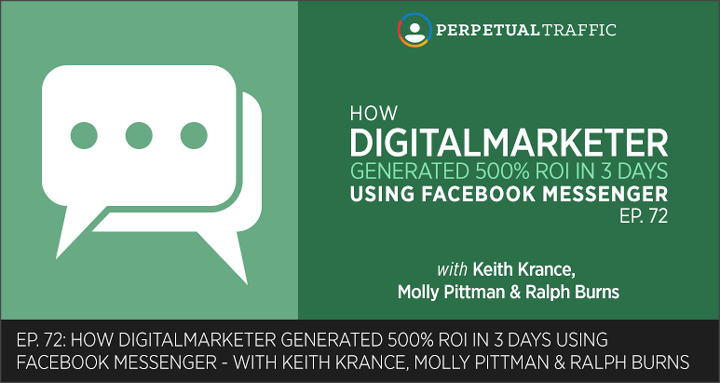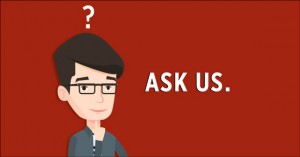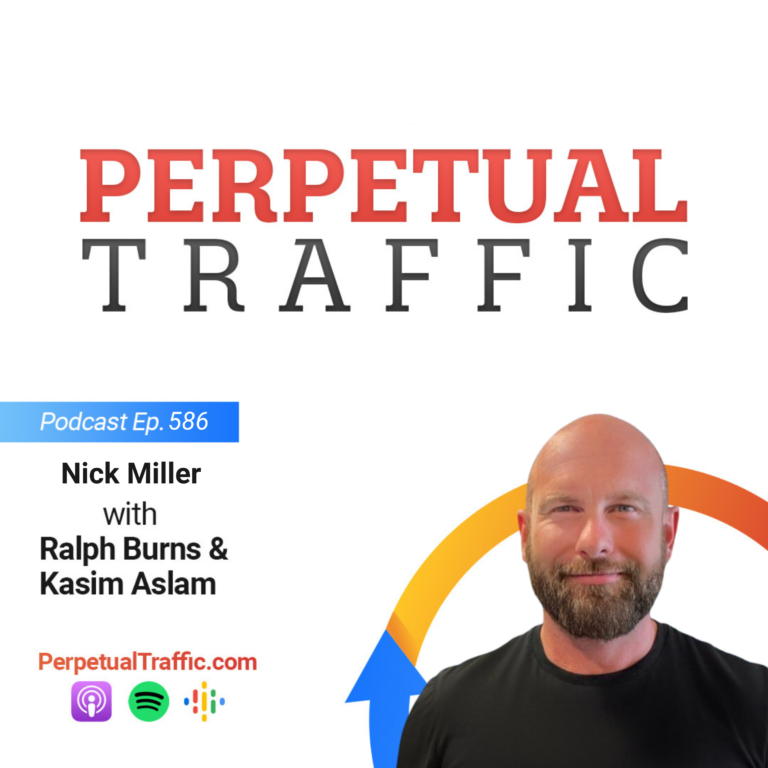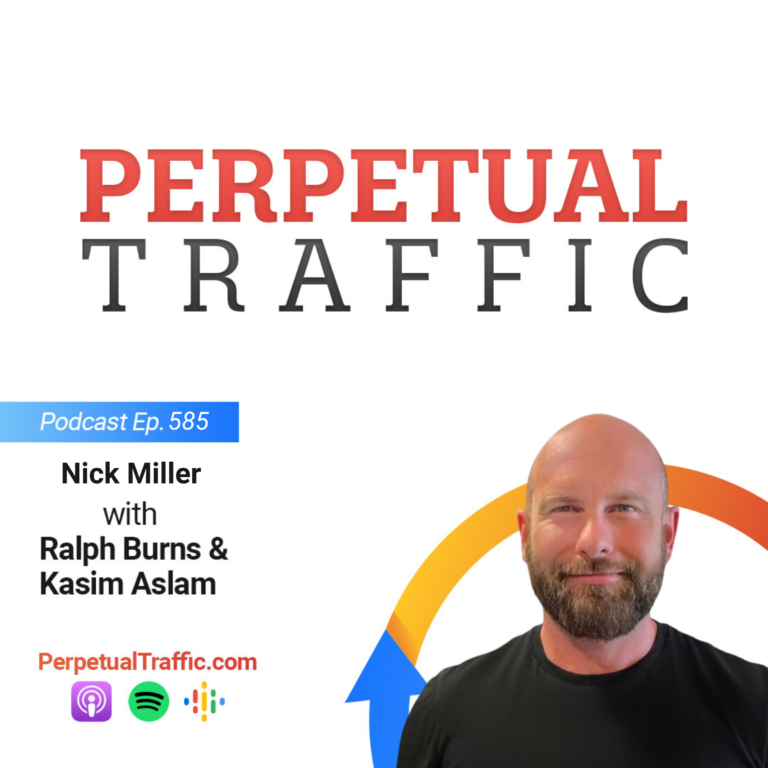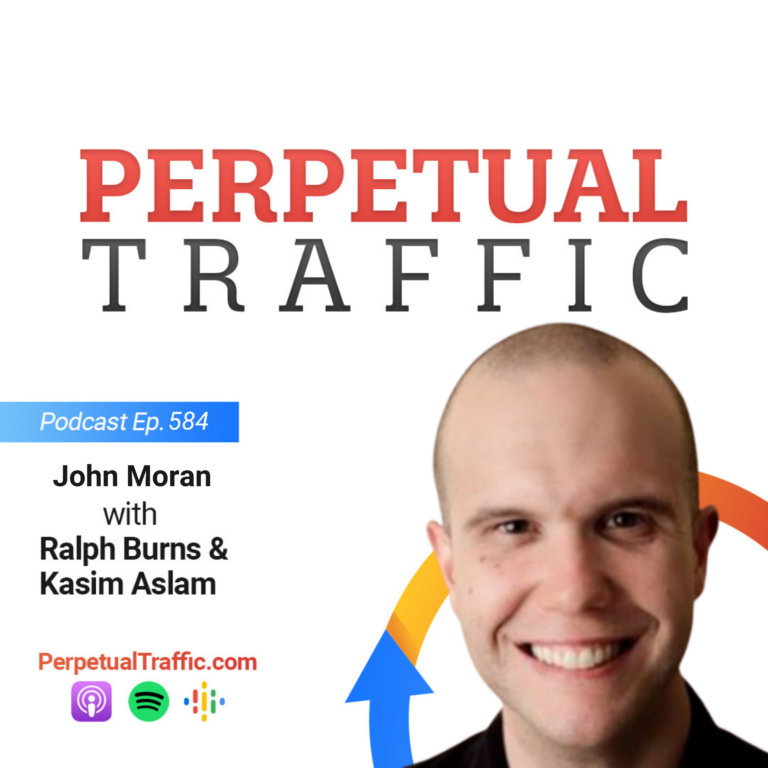500% ROI from Facebook Messenger?! This is big.
Listen as Molly details how DigitalMarketer used the new Facebook Ad Messenger Placement to start over 300 conversations with their fans and customers, which led to a 500% ROI in just three days! Discover how this strategy is applicable to any business advertising on Facebook.
IN THIS EPISODE YOU’LL LEARN:
- How to create the same Messenger ad DigitalMarketer used, which quickly led to 500% ROI.
- How you can use Messenger ads to have your leads initiate the conversation with your business.
- Learn how DigitalMarketer is using this powerful tool to speed up the Customer Journey, answer people’s questions, and close deals (« so you can do the same!).
LINKS AND RESOURCES MENTIONED IN THIS EPISODE:
ManyChat
The link DigitalMarketer uses in their Facebook ads to send users to Messenger (think Molly’s T&C example): m.me/digitalmarketer
DigitalMarketer’s “Ask us” Messenger image: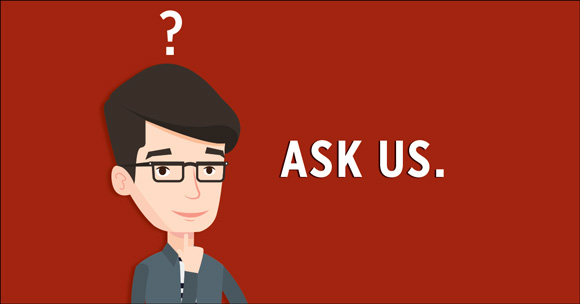
Episode 72 Transcript (swipe the PDF version here):
| Keith Krance: | Hello, and welcome back to Episode 72 of Perpetual Traffic. We’ve got all three of us—not quite together. We just were together this past week, last few days, but we’re recording in our separate spots again. I’m back in Seattle. Molly and Ralph are both in Austin. We got to hang out this week. We had a good time, didn’t we?
|
| Ralph Burns: | We did.
|
| Molly Pittman: | We had a blast.
|
| Ralph Burns: | Probably too much fun at times.
|
| Keith Krance: | We did. It’s been a whirlwind couple of weeks for me, for sure. It’s nice to be back home. War Room was last week, which is DigitalMarketer’s iron mastermind. We meet four times a year, and, gosh, it was awesome. This last week, it was in Austin. It’s usually in a different city every time. So, we got to hang out with Molly and Russ Henneberry and Lindsay Marder. It’s really good stuff. We had a good time. Wednesday night, we ended up going out for dinner with our old partner manager and our new partner manager and all three of us, as well as Justin Rondeau who was there for a bit, we had a great time having dinner and a couple of drinks and talking about the growth Facebook has had and some of the kind of unique opinions on algorithms and all that kind of stuff.
|
| That was fun. I’m excited for what we’re going to talk about. Molly, you were up on stage and you shared something that’s brand new that we’re going to talk about today. Everybody in the room was looking around like, “How can we start doing this right now?”
|
|
| Ralph Burns: | Always on the cutting edge, that Molly Pittman.
|
| Keith Krance: | It was so funny. Remember? There was somebody in the front table, she’s like, “My person on my team is not here right now, so where can we go find more information about this inside your member’s area? Where can we find out about this?” Ryan‘s like…
|
| Ralph Burns: | “We don’t have an execution plan right yet… It came out yesterday!”
|
| Molly Pittman: | We’re recording right now on a Friday. It’s Friday, November 18th. We figured this out on Tuesday, just three days ago, which was really cool. This episode’s going to be about Facebook Messenger. Specifically, the new Messenger placement that you may or may not have found or seen inside of Ads Manager and Power Editor. I knew that this was going to be big. E-mail is still king in our business. It’s our highest revenue asset that we have. E-mail produces the most revenue in our business, but we are realizing that we’re going to have to start developing other channels.
|
| E-mail is saturated, and people like to communicate in other ways than e-mail. Through the addition of our sales team in the past few months and some conversations Ryan and I have, we’ve really been on the search for other channels. So, we’ve been doing a lot with push notifications and trying out different traffic platforms. We’ve been using SMS messaging. Our sales team obviously calls people. We’ve been trying different channels to sell and to engage and to interact with our customers. I knew when this placement was added and different third party tools were added around Messenger, I knew this was going to be big, but I didn’t understand how big it was going to be.
|
|
| Just to take a step back, I found Messenger as a placement with Facebook newsfeed. I noticed that Messenger had been added and I was like, “Ooh, this is really cool! I wonder what this does?” I played around with this, and when you set up an ad and you use the Messenger placement, you run the ad and it looks like a normal link ad. When you click on it, it opens up your Messenger. So, if you’re scrolling through and you see an ad, and it’s from 1-800 Flowers, and you click on it, and it’s the Messenger placement, it will open up a message right there in the bottom right-hand corner. Right in your desktop or on your mobile device. Just like if you received a Facebook message from a friend.
|
|
| It’s really, really cool. But when I started playing around with it, I realized that when you select that placement at the ad set level and then you go to select your targeting, it only allows you to message people who have messaged your page in the past. I’m not saying that it will always be like this. But right now, if you select the Messenger placement, and then you go to input any type of targeting, unfortunately, it says, “Messenger can only be used for people who have messaged your page. If you want to choose the Messenger placement, choose a different audience.” I’m like, “Well, crap. You know, I really wanted to target people who had visited an order form and didn’t buy.” I really saw Messenger being a way to overcome to barriers, especially when you’re selling online.
|
|
| You don’t know why people choose not to fill out the order form. A lot of times you assume that they didn’t want the product. Usually, they have a question that’s not being answered. That’s why live chat has become so popular on order forms and on websites. Being able to get that instant response that our society expects now. Again, I knew Messenger would be big, but I was disappointed because it told me, “We can only target people who have messaged your page.”
|
|
| I started playing around on our brand page. Basically, if you go to your Facebook page and you go to write something or post something, you’ll notice, and if you don’t it will come in a few weeks, Facebook’s added six little-colored boxes there.
I think they’re there to help people who are just getting started understand what they can do with their Facebook page. It’s “Share A Photo or Video,” “Get More People to Learn More,” “Create an Event,” “Create an Offer,” “Create a Job Post,” and then “Get Messages.” I saw “Get Messages” and I was like, “Whoa, okay! I wonder if there’s some way I can use this as a workaround to target our custom audiences. To target the people I couldn’t in Ads Manager or Power Editor.” So, I clicked the “Get Messages” button and it pops up with a default post. It pulls in your cover photo and just uses some copy that’s already on your Facebook page. You’re able to edit that. You can change the image and the copy. But when you publish this post, if someone clicks on it, it will open up a message that directly messages your fan page.
|
|
| I got excited because I figured that this would act as a normal post on our page and that we would be able to boost it and target anyone we want, so I had Britney, our designer, create a quick image. It’s a red image with a guy who’s thinking and it says “Ask us.”
I wrote up some quick ad copy that says, “Have a question about how we can help double the size of your business? Have a question about DigitalMarketer Lab or any of our products? Click here to chat.” I posted it to the page. Then, I went to boost the post and I was waiting on the edge of my seat, “Like, I’m going to get that error again, I know I am.” It was cool that it could be organically posted, but of course, I want to be able to target the people who we’re showing this ad to.
|
|
| I got really pumped because it was letting me choose whatever targeting I wanted. I wanted to get this out quickly, so I just chose our email list. I figured this would be cool and fun to people who already know us. It’s a pretty broad question, you know? “Have a question about how we can help double the size or your business? Have a question about our products?” I just wanted to see if people would even respond. I boosted it for $700.00 over a few days. I sat back and I was just excited to see what happened. We started getting a lot of messages to our page. Anything from, “Hey, I have a question about if this particular certification would work for my business,” or “I saw this on your blog, can I implement this in our business?” Over the past three days, we’ve received over 300 messages from different people to our page.
|
|
| We’ve paid around $2.00 for every person that messaged us, but we’ve sold at least ten to 15 products from this so far. I mean, we’re at least 500% ROI positive. The coolest part is that I’ve been able to bring in two guys from the sales team. They’re MDRs and they’re usually receiving inbound email leads and they’re emailing people to try to schedule a call with a sales rep or to go ahead and make the sale if it’s an easy sale. They’ve been inside Facebook, and they’re able to close deals on their own because the interactions are happening so quickly. With you have to wait for someone to respond. But this is instantaneous.
|
|
| Someone asks, “Will this work for my business?” They immediately overcome the objection. The person says, “Yes, I want to buy.” “Okay, let’s get on the phone now and process the payment.” They’re really speeding up the Customer Journey here, and it’s providing some extra support to people who are interested in our products but just need help overcoming boundaries. Right now, we’re taking a step back to do a complete analysis of this. To create processes and systems around it. I do know that Facebook Messenger syncs with platforms like Zendesk and Salesforce and other CRM’s and customer service tools, so we will be implementing that. At DigtialMarketer, we use Zendesk. We will be syncing the two so that the Customer Service and the Sales team can respond to these messages in the same platform as they’re answering tickets, but you don’t have to do that. You can answer everything right here.
|
|
| Ralph Burns: | You can do it manually. Exactly. So many ways to do it manually.
|
| Molly Pittman: | The coolest part is that you’re interacting with people in a channel where they feel comfortable. That’s quick. And you can answer specific questions about your products. Imagine if you set up an audience, like I said earlier, of people who visited the order page and didn’t buy and you simply ran an ad that said, “Hey, I noticed you visited this page and you didn’t buy. If you have a question, feel free to click here. We’re happy to help.” If you’re selling high dollar services that would require a longer conversation, maybe you’re an agency, this would be a great way to answer those questions. To explain more about how you can help this person.
|
| Keith Krance: | There are so many big things here that can be absolutely game changing for your business. First of all, people are initiating the conversation. Yes, you’re posting the message and boosting that using Facebook ads. But like Molly explained if you go to your Facebook page, and you’re going to write a status update and the drop-down will ask you what you want to do. One of the options is, “Get people to message your business.” Notice the difference there. It’s not saying, “Send people direct messages.”
|
| Molly Pittman: | Right.
|
| Keith Krance: | You’re not doing that. You’re running an ad they’re going to see in the newsfeed, and you’re actually telling them to initiate a conversation, which they’re doing. The people that respond to this are people who are initiating the conversation. That’s one of the things that Ryan talked about in general. One of the things he sees in the future of marketing as we head into 2017, is figuring out ways to use marketing to start a conversation.
|
| Molly Pittman: | Right.
|
| Keith Krance: | We’ve talked about starting a conversation before. Maybe you’re a local business and you have a secretary who reaches out. If you have a local business like that, it’s going to be very important to have somebody who isn’t just a minimum wage secretary but can actually call people and talk to people in the right way to get them to come in. However, if you don’t have a business that has an outbound sales team, that’s okay too. There are so many simple ways you can start a conversation. You can just send them directly to your Lead Magnet after you start the conversation or to a webinar.
|
| Molly Pittman: | Absolutely.
|
| Keith Krance: | Or to download something, or to a product page in a lot of cases. There are a lot of ways you can do this very, very simply, and you can add complexity later. You can add automation later.
|
| Ralph Burns: | I think a key point with this, too, is that we actually tested this. The day after Molly started testing it.
If you’ve been listening to this podcast for any amount of time, using content to engage your audience is obviously very important. It’s one of the things that we really preach. I think DigitalMarketer does this better than just about anybody on the Internet.
A different case study is that we actually did use the exact same strategies that Molly is talking about here for another customer with a very small audience. It has seen very poor in engagement, and so far, we have not gotten a whole lot of results from this.
|
| I think the reason is because you guys at DigitalMarketer have been so good at communicating and giving so much value up front. People feel like Facebook is a trustworthy platform in which to communicate with you and also just by the sheer size of your list. My sense is that Facebook is probably showing your ad to those who have either used Messenger in the past or maybe even have an interest in Messenger, so this isn’t a foreign concept to them. Somebody who has never used Messenger on your list, however large that list is, maybe those folks aren’t seeing this message because they don’t have a propensity to actually use Messenger. Just like when we talked about website conversions.
|
|
| If you have a million-person audience or a potential reach, your ad is only being shown to maybe 200-300,000 of those people because those people have a higher propensity to convert on a website. Same thing here. This is a part of the overall sales continuum, and that’s why Molly’s campaign is doing really well and our is just sort of stagnant at this point. We might put a few more dollars to it. We’re going to continue to test it nonetheless, but I do think that’s really important to this whole thing.
|
|
| Keith Krance: | They haven’t built up enough brand equity yet in that situation.
|
| Molly Pittman: | I think that you have to look at the difference in businesses and the question you’re asking, too. Since we are a source of information, there are people who want to message us when we ask the broad questions of, “Ask us how we can double your business” or “Ask us about our products.” People felt comfortable with that. It might not be why it didn’t work, but I think it depends also on your ad copy.
|
| Keith Krance: | Yep. You’ll have to go higher, as we say, higher up in the funnel. You might have to ask a question more related to a problem or a desire in a situation: “What do you think the answer is to live a full, long life till you’re 95 years old?”, or whatever. It might be general health related. It might be specifically to having healthy teeth. There are so many different ways you can do this and I think you’re totally right. You’ve got to realize how much of an audience do you have. Are you targeting the people who don’t know who you are? Cold audiences. And your goal is just to start the conversation and make them aware of a problem that they might not know that they have.
|
| Molly Pittman: | I really think—say you’re selling a software that tracks analytics or data. You could use the copy to say, “Hey, explain your number one issue tracking visitors on your website. We’ll answer you as soon as possible.” If you’re asking a question that’s a little bit more related to the service. And I do agree with what you said, Keith, about the top of funnel, but I think the biggest use of Messenger moving forward is going to be engaging with people who are middle of the funnel and bottom of the funnel.
|
| Keith Krance: | Yeah.
|
| Molly Pittman: | Those people who really need the help to overcome whatever objection they have. Because I do agree. It’s weird if you don’t know a brand very much, like why would you message them? You know? I think a lot of this is going to come down to who you’re targeting and really what your ad copy says. What is the reason that this person should actually message the page?
I did want to add two more things that are really cool to this whole idea of Facebook Messenger. We’re also using something called ManyChat and it’s a bot. It takes two minutes to set up and it connects with your Facebook page. The cool part about this is that it’s essentially pixeling everyone that messages your Facebook page. They’re called subscribers inside of this platform. What’s cool about that is you can then broadcast to subscribers. Over the past few days, we’ve been able to add all of these people who are messaging us as subscribers. Then, later on in time, if we do want to send out a broadcast, like “Here’s a new blog post” or “Here’s a Lead Magnet” or “We’re running a special on this product,” we can distribute that message to all of these people in one big swoop. That’s really exciting to tie it back to us really looking for different channels. Not only is this great in terms of us being able to engage with our audience and overcome objections, but we’re also building this list of people who we can send messages to later in time. I think that’s great. |
| Also, for diversifying your traffic or diversifying the ways you’re communicating. For example, yesterday we sent out an email to people who have purchased tickets to our event Traffic & Conversion Summit. Basically, it said, “Are you coming to T&C alone?” And it says, “What better way to get your team excited about learning and implementing new strategies to grow your business than spending a few days with them in San Diego? Since you already bought your T&C ticket, you’ve unlocked a special companion price, so you can bring a few or all of your team with you. The more you bring, the bigger the discount! So, I’ve got one question for you: How many team members do you want to bring with you to TNC? You’ve got three ways to answer. Number one, just reply to this email,” which those go to the sales team and that’s a pretty standard way for us to communicate. “Give us a call,” and we’ve got our phone number in there, so they can just pick up the phone. And then the third one is my personal favorite, “And the fastest way to hear your special discount, let’s chat on Facebook.” | |
| Keith Krance: | Love it.
|
| Molly Pittman: | “Click this link to open the chat and tell me how many people you’d like to bring.” The link that’s provided, which I will put in the show notes, too, at digitalmarketer.com/podcast, is m.me/digitalmarketer. You could replace that link with any Facebook page name, so anyone can use this link. When they click the link, it opens Messenger. It sends the person over to Facebook and it will immediately open a message where they can message those people. It’s cool because it gives people who want to buy T&C tickets another way to communicate with us. But we’re also now moving subscribers from email over to ManyChat, so we’re diversifying our channels of communication. In the future, I see us sending out an e-mail to our whole list asking people to chat on Facebook, so that we can build the subscribers over on the bot, too, again, so that we’re diversifying.
|
| I also know, I was talking to Ezra Firestone about this, and he has Facebook Messenger integrated with Shopify. So, if you’re using Shopify, you can use the integration, and every time someone purchases from you, if they decide to log in to Facebook to purchase, they will receive their order confirmation through Facebook. That’s great because if you have ManyChat downloaded and installed, then now you are building subscribers on that platform of people who have bought from you.
|
|
| You can see all of the possibilities for this. I think this is just the tip of the iceberg. Really, really exciting stuff. We’re looking forward to finding different ways to use this. And really, I think it’s applicable to any business.
|
|
| Keith Krance: | Absolutely.
|
| Molly Pittman: | Every business is selling to human beings and people want to talk and they want to talk now. They don’t want to wait on an email. They don’t want to call.
|
| Keith Krance: | Yep.
|
| Ralph Burns: | How psyched are your sales guys at this point?
|
| Molly Pittman: | So psyched. They are hopping around. So pumped because it’s such an immediate, perfect way for them to communicate. But even if we didn’t have a sales team, I would get in there and talk to these people, you know? It’s so powerful. I’m sure you guys can tell I’m excited.
|
| Keith Krance: | These are messages. When people get messages. Maybe they initiated the conversation. Maybe they forget about it, but then a minute later or ten minutes later, guess what? They get a notification, a push notification on their phone. You don’t get that with e-mail. Well, some people do, but most people don’t. The impact is, just there’s no comparison.
Really quick recap, Molly. First of all, go to digitalmarketer.com/podcast. This is Episode 72. We’re going to have all the resources to the tools you mentioned. People might be wondering what are those again, so list those resources. And then, like I said, go back to the show notes.
|
| This is an episode you might want to listen to again. Don’t be afraid to listen to it again or have your team listen to this stuff.
|
|
| Molly Pittman: | Absolutely. It’s manychat.com. Then, to create a Messenger ad, you can either do it through the Ads Manager or Power Editor, but unfortunately, it won’t let you target custom audiences inside of there right now. It will give you an error. If you want to target custom audiences, your email list, people who visited one page but didn’t visit another, you go over to your Facebook page. You’re going to select the button that says, “Get Messages.” This will allow you to customize the image and the copy. Again, really think about the copy. This isn’t going to work if you’re not asking the right questions. So, what do you want to ask? What is something that you can ask or tell them to ask you that will not only be helpful to them but will also lead you to be able to make a sale?
|
| The key of this is not just to sit on chat all day. You want to be able to service your customers. You want to be able to help them, but what is something you can ask that can really lead people down to the solution of, “Oh, I really should buy this”? Write the copy, post it to your page, and then you can boost it to custom audiences, interest targeting, all of the options that are there within the boost post. I’m sure within the next few weeks, all of these different features will be rolling out at different times to different people. I’m sure eventually we will be able to target whomever we would like in Ads Manager and Power Editor with this placement. All I know right now is this is really cool.
Even if you don’t plan on running any ads, definitely download ManyChat. It’s basically a Facebook pixel. Install it today, so it can start building those subscribers of people who message your page. I installed it a few weeks ago because every day we get a few messages, at least, of people with customer support questions or people who just want to reach out. Go ahead and get that installed if you don’t do anything else, and let us know what you guys think. We will have more info to come. |
|
| Keith Krance: | Perfect. Perfect. Love it. Good stuff, Molly. Good stuff.
|
| Ralph Burns: | Awesome.
|
| Keith Krance: | Look forward to hearing what you guys are trying out there. We’ll, of course, be filling you in as we get more data. As we start doing it with some of our clients and Molly continues to do it with the DM brands. We can’t wait to talk to you next week! We love doing this, and we’ll talk to you guys soon. |
Thanks so much for joining us this week. Want to subscribe to Perpetual Traffic? Have some feedback you’d like to share? Connect with us on iTunes!
iTunes not your thing? Find us on Stitcher or at DigitalMarketer.com/podcast.
(NOTE: Ready to use Facebook’s newest “ad” platform to turn one-to-one conversation into sales—even if you don’t have the staff to reply manually? Check out the Facebook Messenger Marketing Blueprint and discover how Facebook Messenger Ads are changing the way businesses communicate with customers. Learn more now.)

